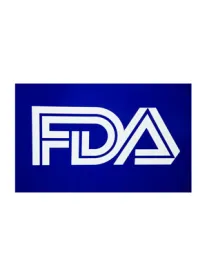The FDA recently released a draft guidance titled, “Benefit-Risk Factors to Consider When Determining Substantial Equivalence in Premarket Notifications [510(k)] with Different Technological Characteristics.” The draft guidance is intended to help FDA reviewers determine substantial equivalence and also states that it may help applicants demonstrate substantial equivalence, particularly where their devices include evolving technology.
The draft guidance begins with a high-level review of the analysis of substantial equivalence, noting that it starts with the question of whether the device for which clearance is sought has the same intended use as the predicate device. If so, then FDA considers whether the two devices have “the same technological characteristics” or whether any differences in technological characteristics raise different questions of safety and effectiveness and whether the applicant’s device is at least as safe and effective as the predicate device.
In connection with the safety and effectiveness of the applicant’s device, the FDA will weigh “any probable benefit to health from the use of the device against any probable risk of injury or illness from such use, among other relevant factors.” Benefits and risks may be identified from performance data, which can be non-clinical or clinical. A device with decreased benefits compared to the predicate may be found substantially equivalent if it also presents decreased risks; conversely, a device with increased risks compared to the predicate may be found substantially equivalent if it also offers increased benefits.
This draft guidance then identifies and seeks to clarify the benefit and risk factors it considers if it has determined that any different technological characteristics do not raise different questions of safety and effectiveness. The benefit factors that the FDA will consider include:
-
Type of benefit(s) – examples include the device’s impact on clinical management, patient health, and patient satisfaction in the target population, such as the effect on patient management and quality of life, probability of survival, improvement of patient function, prevention of loss of function, and relief from symptoms
-
Magnitude of the benefit(s)
-
Probability of the patient experiencing one or more benefit(s)
-
Duration of effect(s)
The FDA also considers several risk factors individually and in the aggregate:
-
Severity, types, number and rates of harmful events associated with the use of the device
-
Device-related serious adverse events
-
Device-related non-serious adverse events
-
Procedure-related complications
-
-
Probability of a harmful event
-
Probability of the patient experiencing one or more harmful event(s)
-
Duration of harmful events
-
Risk from false-positive or false-negative results for diagnostics
-
The number of different types of harmful events that can potentially result from using the device and the severity of their aggregate effect
The draft guidance also identifies a number of “additional factors” that the FDA considers when assessing the safety and effectiveness of an applicant’s device, including the following:
-
Uncertainty – the degree of certainty of the benefits and risks of a device
-
Characterization of the disease/condition – the disease/condition, its clinical manifestation, how it affects the patients who have it, how and whether a diagnosed disease/condition is treated, and the condition’s natural history and progression
-
Patient tolerance for risk and perspective on benefit
-
Benefit for the healthcare professional or caregiver – FDA recognizes that certain devices, such as surgical tools that allow different techniques or devices that positively affect ongoing patient management, may improve the way they care for the patients and consequently improve patient outcomes
-
Risk mitigation – mitigation measures may minimize the probability of a harmful event occurring and improve the benefit-risk profile
-
Postmarket data – provides a greater understanding of risks and benefits, and the risks and benefits of similar devices
-
Innovative technology – When a new device has technological improvements that are important for public health, FDA states it may accept greater uncertainty in an assessment of benefits and risks as compared to the predicate device
Finally, the draft guidance discusses a number of specific examples of application of these various factors.
As always, it is important to recall that the FDA guidance documents do not have the force of law, but rather simply represent the FDA’s current thinking on a topic.
A pdf copy of the guidance is available here.




 />i
/>i

